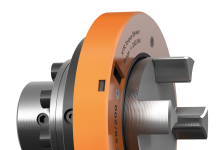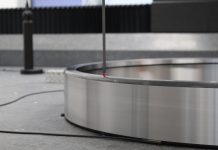Romax Technology offers engineering consultancy services as well as a software simulation suite for the design, analysis and optimisation of gearbox, bearings and driveline systems.
Licensed by top OEMs around the world in the automotive, wind, rail, marine, aerospace and bearings industries, we look at what makes RomaxDesigner the industry standard in today’s market.
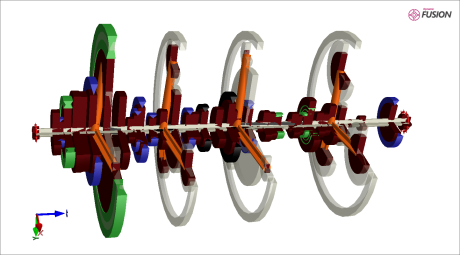
Founded over 25 years ago by world-renowned leading bearing expert Dr. Peter Poon, Romax Technology offers engineering consultancy services as well as a software simulation suite for the design, analysis and optimisation of gearbox, bearings and driveline systems. RomaxDesigner sits at the heart of the software product suite, and enables complete system simulation from a concept to a detailed development stage. With analysis and optimisation capabilities for durability, efficiency and NVH, RomaxDesigner aims to provide a single solution to a multitude of industry problems.
Because of the whole-system approach, all component interactions are taken into account so that all correct misalignments are calculated and their effect accounted for. The complex impact that components such as shafts and bearings have on the whole system are included in the model with non-linear, load-dependent stiffnesses. This analysis provides reliable and accurate results, which can be used either to improve existing designs or to create new designs to high quality specifications from the start.
For automotive customers wishing to optimise their system’s efficiency and NVH without compromising on durability, RomaxDesigner’s whole system analysis can help. The software’s advanced capabilities for efficiency analysis allow designers and manufacturers to ensure their gearboxes will satisfy current stringent emissions rules. Romax software is also being used by research and development teams (both within Romax technology and at various research institutes) in the development of electric and hybrid vehicle technology. Aside from efficiency issues, RomaxDesigner’s functionality in gear whine and gear rattle provides integrated analysis for noise and vibration issues. Reports for durability, including bearing ellipse truncation, gear bending and contact safety factors, and shaft fatigue, are reported throughout the design process, alongside other analyses.
Wind industry customers can take advantage of RomaxDesigner’s sibling product, optimised for generation and analysis of wind models: RomaxWind. Incorporating all of the relevant features of RomaxDesigner, but also allowing for wind turbine load data analysis and output of reports for GL certification, RomaxWind provides a complete system simulation solution for durability, reliability and performance issues.
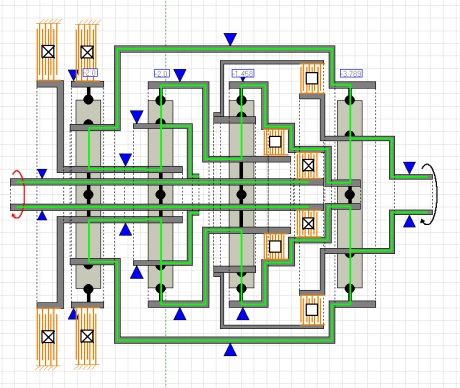
With its slogan of Right First TimeTM, Romax software aims to enable designers to create a system optimised for the customer’s specific targets from the beginning, as well as troubleshooting existing designs facing issues with durability, efficiency or NVH. But as well as this, because of the way in which detail is built up step-by-step, with each stage allowing for as much analysis as possible to be carried out with the minimum required detail, Romax ensures you have the right model at the right time – there is no need to add unnecessary detail for a basic level analysis, but when you are ready to further define your components, the analyses available also get more detailed.
Integration and interoperability for efficient design
RomaxDesigner sits in the heart of the Romax software suite, and is supported at both ends of the process by the rest of its product family: Concept, CAD Fusion and Dynamic Fusion. Concept allows for multiple designs to be tested out at an early stage in an intuitive, drag and drop interface with powerful analysis capabilities. Models can be transferred from Concept into RomaxDesigner (or RomaxWind) when you are ready to add more detail and perform more advanced analyses. In order to import or export components between CAD packages and Romax software, in order to speed up the modelling process and perform packaging checks, CAD Fusion provides an intelligent interface allowing you to transfer the components with the appropriate level of detail. Once a model has been created in either Concept or RomaxDesigner, Dynamic Fusion can be used to automatically generate a multibody dynamic model for use in Adams software or Modelica-compliant programs.
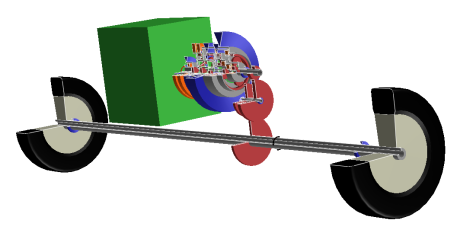
Through Dynamic Fusion and CAD Fusion, Romax models can be integrated with MSC Adams and Modelica for multibody model analysis, as well as Creo, Catia and other CAD packages to decrease the need for data re-entry. As well as these, RomaxDesigner offers interoperability with many other major software programs, including ANSOL, AVL, KIMoS, Abaqus, Ansys and Nastran.
Full system modelling and analysis
When a model is first built, components can be defined with basic geometry as follows:
- Shafts are defined using Timoshenko beam theory, and just need a length and outer diameter specification to model them as simple cylinders
- Helical, spur, bevel, hypoid or planetary gears are defined simply as loading components (with just a ratio, face width and helix angle – if appropriate), or with a concept level of detail e.g. helix angle, teeth numbers, normal module, pressure angle and face width
- Bearings can be defined as conceptual stiffness components, which have editable axial, radial and tilt stiffnesses, before you know exactly which catalogue specification is best for your design
This level of detail allows you to perform ratio design, evaluate packaging constraints and housing clearances, look at forces, and calculate axial and radial forces without the need to specify detailed gear geometry. If you would like to perform rating or micro geometry analysis, you need to add in detailed geometry for the gears.
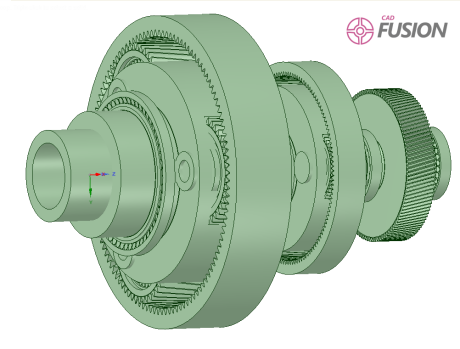
When models get progressively more detailed, more definitions can be added to the components such as:
- Shafts can have detailed steps and sections, and shaft material, surface treatment and lubricant can be defined, as well as shaft features such as fillet radii, grooves and holes. Shafts can also be defined as FE shafts to allow for out-of-plane deflection and accurate results where the shaft has large changes in diameter.
- Housings can be added (and either condensed within RomaxDesigner or an external program) to see the effect of housing flexibility on gear and bearing misalignment, life and predicted bearing loads.
- Other FE components can be created e.g. planet carriers, to investigate its effect on planetary load sharing and rolling element bearing raceway ovalisation.
- Bearings can be defined as catalogue bearings, or defined with custom specifications. Roller profiles can be specified, as well as various pre-load options. They can also be defined using FE for flexible inner or outer rings to fully investigate deflections.
- Splines and other joints/components.
With this level of detail in the model, more advanced analyses can be carried out such as:
- Gear ratings and micro geometry analysis
- Advanced gear whine and gear rattle analysis
- Planetary transmission error analysis
- Roller bearing stress distribution and ellipse truncation
- Contact patch analysis
- Component and system level efficiency analysis
- Shaft fatigue analysis.
The fact that RomaxDesigner provides one place in which all components can be modelled and analysed both individually and as part of a system, for such a wide range of analysis types, means it can act as a single program for the development of a transmission from start to finish. Reiterations can easily be done as you are working within both a modelling and analysis environment. This means that RomaxDesigner can be used for design optimisation, using its advanced analyses procedures.
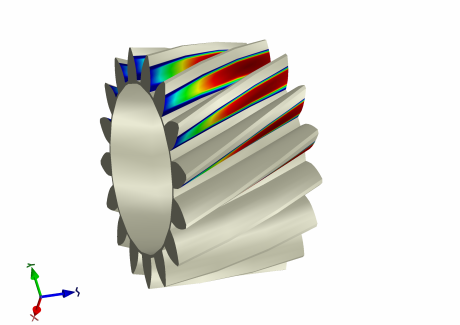
Design optimisation
Romax software enables critical component and whole-system optimisation. It has a number of automated designers and optimisers which help with this process, beginning from the very foundations, with Concept software.
Concept contains an optimiser which allows you to determine the individual gear ratios required in order to achieve the desired combined ratios of all your load cases. Whilst Concept calculates the possible geometry combinations to allow your desired ratios to be achieved, you can still view all reports and results of your system as normal, ensuring that you are best placed to make the correct design decisions. Gears can also be optimised in Concept, as an automated Gear Set Designer allows you to set weighted targets such as contact or bending safety factors, transmission error, and mesh efficiency, whilst varying a user-defined range of parameters.
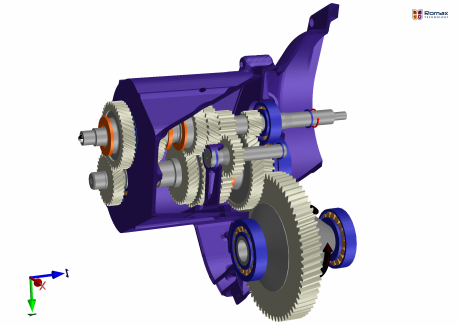
In RomaxDesigner, a range of optimisation procedures can then be carried out, including gear macro geometry optimisation and gear micro geometry optimisation. A whole-system design of experiments tool allows the complete driveline to be optimised at once, for component or system level durability, NVH or efficiency targets.
New features for Romax
Last year’s release of the software saw the main new feature of introducing customised reporting into the Enterprise version of RomaxDesigner. Customised reporting allows customisable templates to be set up and shared across organisations for the fast and repeatable generation of consistent reports which match a particular specification. Further automated and time-saving features have been added into the 2015 version of the release, including the ability to use batch running to run Romax software from a command line, or through an external program. This feature will bring huge time savings and increase Romax’ integration with other software programs.
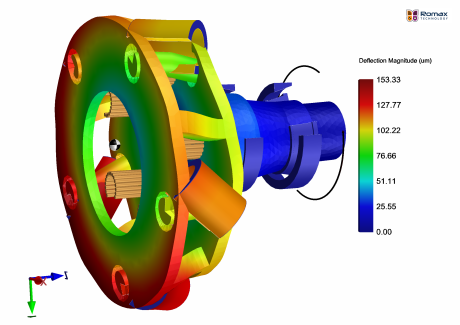
RomaxDesigner’s batch running capabilities will allow commands to be set up by defining variables, actions and results which can be saved as an XML file, to be human-edited if required, and reused as necessary. Romax can then be run in batch mode, a process which can be automated using an external program, after which the results can be read from the resulting XML file. Enabling customers to link RomaxDesigner into other areas of their design and analysis process, batch running is interoperable with optimisation codes such as Isight, modeFrontier and Optimus.
As well as batch running in RomaxDesigner, CAD Fusion will see a huge step forward in its new feature to create, edit and mesh 3D geometry. Previous versions of this powerful plug-in to RomaxDesigner and Concept have allowed 2D profiles to be extracted from either 2D or 3D geometry so that they can be imported directly into Romax software. Intelligent and automated procedures for CAD geometry healing mean that only geometry which is suitable for Romax software is imported, optimising running times and analysis accuracy. Release version R2.0 will see additional features, enabling 3D geometry to be created and imported into Romax software, as well as automated meshing to directly create and edit Romax FE components.
Alongside these major developments are smaller features and enhancements, including new functionality to model worm, face and beveloid gears, and FE planet pin and bearing models. Most developments occur in conjunction with customers’ own requests, and are developed in response to the needs of their growing client base.
For more information about Romax Technology, its services and software products, visit www.romaxtech.com

